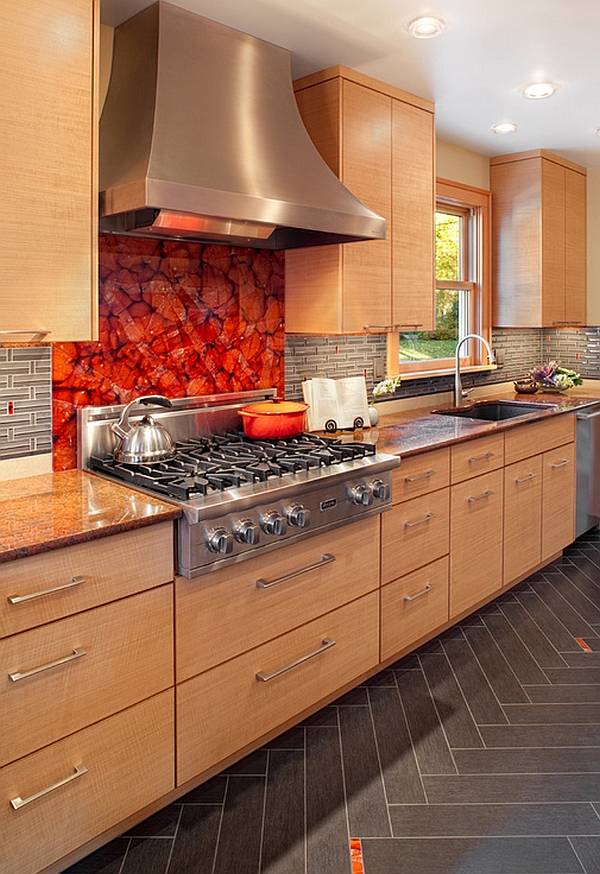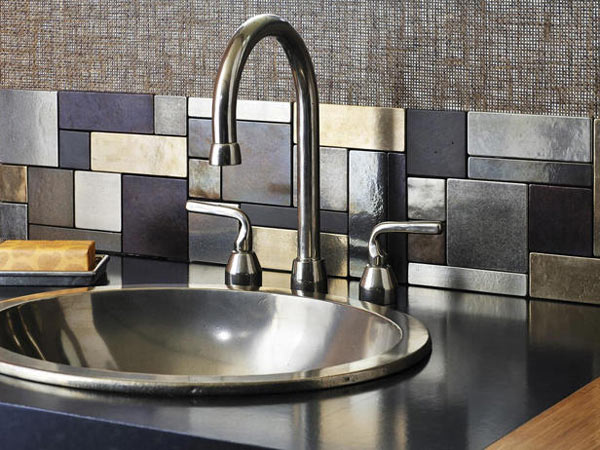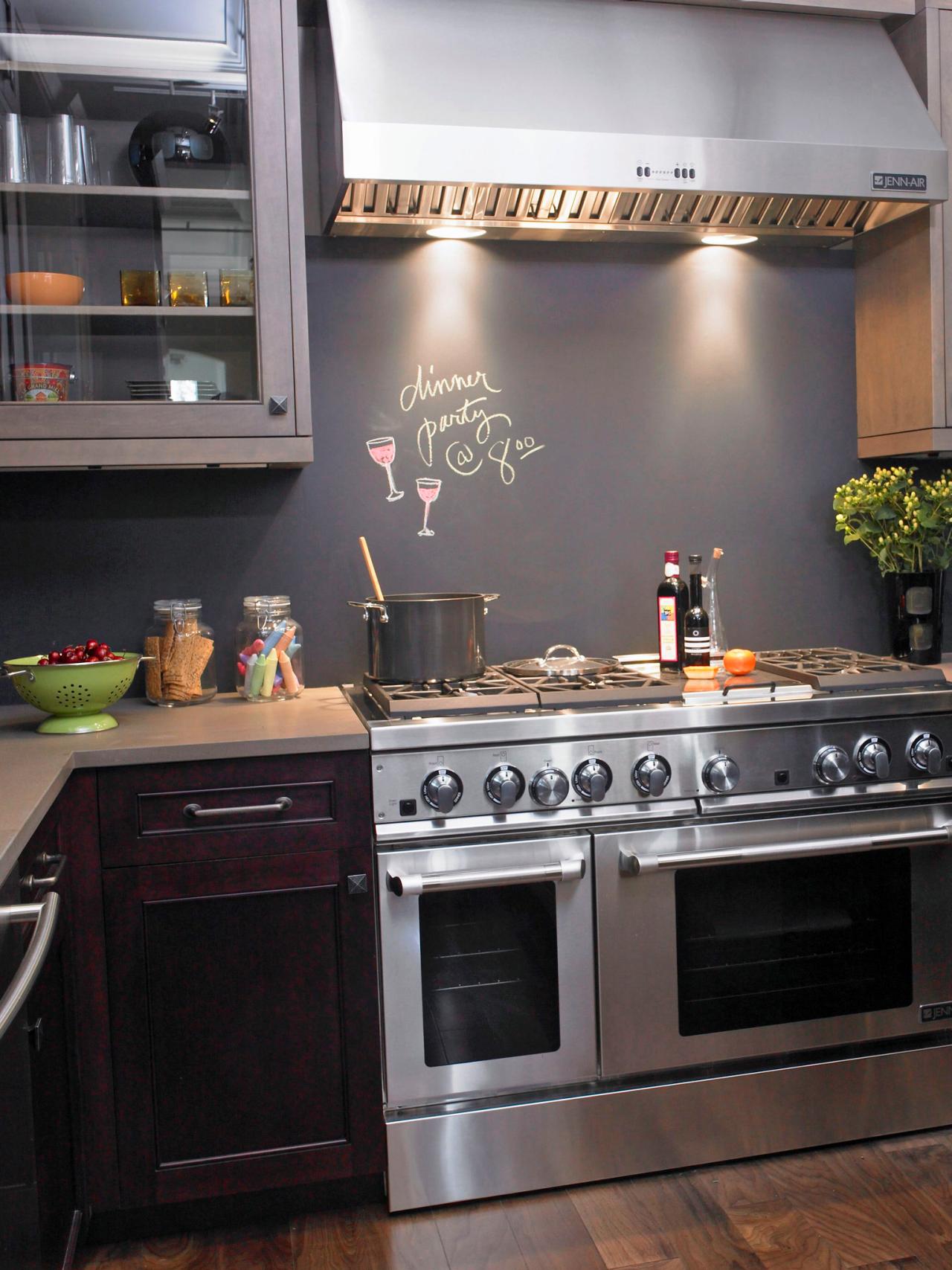When I first started thinking about renovating my kitchen, I knew that I wanted something special to make it stand out, and the backsplash was the perfect place to get creative. The backsplash is often an overlooked part of kitchen design, but it’s one of the most versatile spaces where you can introduce unique materials and interesting textures to transform the look of the entire room. While tile is the go-to for most people, I wanted to explore less common materials that would make my kitchen feel more personalized. The options turned out to be vast and inspiring, from metal and glass to wood and even fabric-backed glass, each with its flair and personality.
One of the first unique backsplash materials I considered was stainless steel. It’s not only modern but also highly functional due to its durability and ease of cleaning. Stainless steel backsplashes are sleek and reflective, which can make a kitchen feel more open and spacious. I loved the idea of combining this industrial look with warm wood cabinets, creating a balance between modern and rustic. However, one thing to keep in mind is that fingerprints and smudges can show up easily on stainless steel, so regular cleaning might be necessary to keep it looking pristine.

Another material that caught my eye was reclaimed wood. I’ve always loved the idea of bringing natural, rustic elements into the kitchen, and a reclaimed wood backsplash felt like the perfect way to do it. Using old wood not only adds character and warmth to the space but also tells a story. Each piece has its history, with its knots, grains, and imperfections that make it truly unique. The texture of the wood also contrasts beautifully with smooth countertops and appliances, creating a visually striking focal point. However, I had to make sure the wood was properly sealed to protect it from moisture and stains, given the humidity and splashes typical of a kitchen.
Pressed tin was another material I seriously considered. Tin ceilings were popular in old Victorian homes, and using this material for a backsplash can add a touch of vintage charm while also being practical. Tin is heat-resistant and easy to clean, making it a great choice for areas behind stoves and sinks. I loved how the intricate patterns of pressed tin could add texture and interest without overwhelming the space. The reflective nature of tin can also help bounce light around the room, making it feel brighter. It’s an affordable material and relatively easy to install, but it’s important to seal it to prevent rusting over time.

Glass backsplashes were another intriguing option I explored. Glass can create a sleek, contemporary look, especially when it’s a single large sheet with no grout lines, offering a smooth, uninterrupted surface. What fascinated me was the possibility of using back-painted glass, where the glass is painted on the reverse side to create a bold, glossy color. This not only makes the kitchen pop but also offers the benefit of easy maintenance. Glass is non-porous, so stains and spills wipe off easily. However, if you go with back-painted glass, make sure it’s tempered to withstand the heat near stoves and ovens.
For a more organic feel, I considered using natural stone slabs like slate or marble as a backsplash. Stone adds an element of luxury and timelessness to the kitchen. Each slab is one of a kind, with its variations in color and veining, making it a unique choice. Stone also pairs beautifully with a range of other materials, like wood and metal. The downside is that stone can be porous, so it requires sealing to prevent stains, especially in a high-splash area like the kitchen. It can also be on the expensive side, but for those looking to make a statement with natural beauty, it’s a worthy investment.
Cork is another interesting material I came across that’s far from traditional when it comes to backsplashes. It’s eco-friendly and offers a natural, warm look that brings a sense of calm to the kitchen. Cork is soft, making it an ideal material for pinning up notes, recipes, or photos, adding a functional aspect to its beauty. One concern I had was how well cork would stand up to moisture, but with proper sealing, it can handle kitchen use surprisingly well. Plus, its sound-absorbing qualities are a bonus in a busy household where noise reduction is appreciated.
Concrete wasn’t something I initially thought of for a backsplash, but after seeing a few examples, I was sold on its raw, industrial appeal. Concrete has an understated beauty, with its soft grays and textured surface, and it works particularly well in modern or minimalist kitchens. It’s also highly customizable—you can stain or color it to suit your design scheme, or even embed materials like glass or metal into the surface for added interest. The only thing to be aware of is that concrete is porous, so it needs to be sealed to prevent staining, especially in a kitchen where splashes are frequent.
I also considered mosaic tiles made from unexpected materials, such as sea glass or even broken ceramics. These can add a whimsical, artistic touch to the kitchen. Mosaics allow you to create a backsplash that’s truly one of a kind, with different colors and textures blending together to form a stunning visual. Sea glass, in particular, has a frosted, translucent quality that can add a coastal vibe to the kitchen. It’s worth noting, though, that mosaic backsplashes can be more labor-intensive to install, especially if you’re going for an intricate pattern.

Another material that intrigued me was fabric-backed glass. This involves placing a fabric behind a sheet of glass, which is then mounted on the wall. The glass protects the fabric from stains and splashes, while the fabric adds texture, color, and even pattern to the backsplash. I loved the idea of using a bold fabric to introduce an unexpected design element in the kitchen. The glass makes the backsplash easy to clean, while the fabric allows for endless customization possibilities. The only drawback is that you’ll need to be careful with heat exposure, so it’s best to avoid using it directly behind the stove.
Mirrored backsplashes are another unique option that can completely transform a kitchen. Mirrors help to reflect light, making the space feel larger and brighter—something that can be particularly useful in smaller kitchens. A mirrored backsplash creates a sophisticated, glamorous look, especially when paired with sleek cabinetry and modern fixtures. However, keeping a mirrored backsplash clean can be a bit of a challenge, as it’s prone to showing fingerprints, water spots, and smudges. That being said, if you’re willing to keep up with regular cleaning, it’s a stunning option.
Brick veneer was another material I considered for its rustic charm. It adds a sense of history and character to a kitchen, especially if you’re going for a farmhouse or industrial look. Brick is durable and heat-resistant, making it an excellent choice for behind the stove. It can also be sealed to prevent stains and moisture damage. One thing I loved about the idea of a brick backsplash is the texture and warmth it brings to the space. However, brick can be more challenging to clean due to its uneven surface, so that’s something to keep in mind if you’re looking for low-maintenance materials.

Copper is a material that has been making a comeback in kitchen design, and it’s perfect for backsplashes. Copper adds warmth and a bit of shine, with a distinctive patina that develops over time, giving it a unique, aged look. It’s antimicrobial and easy to clean, which are both significant advantages in the kitchen. The copper backsplash I considered could either be polished for a bright, reflective finish or left untreated to develop that characteristic greenish-blue patina. The only thing to be cautious about is that copper can be easily scratched, so it requires some care to maintain its beauty.
Finally, I looked into using chalkboard paint as a backsplash. While it might sound unconventional, it offers a playful and functional solution, especially for families. With a chalkboard backsplash, you can write grocery lists, jot down recipes, or even let the kids draw while you cook. It’s a fun way to personalize the space, and it’s easy to change the look just by erasing and starting fresh. Chalkboard paint is relatively inexpensive and easy to apply, but it’s important to choose a high-quality paint that can withstand the occasional splash of water.
After exploring all these options, I realized that there are so many ways to break free from the typical tile backsplash and introduce something truly unique into your kitchen. Whether you’re drawn to the industrial look of stainless steel, the warmth of reclaimed wood, or the creativity of a fabric-backed glass backsplash, there’s something out there for every style and taste.

Common Mistakes to Avoid:
One common mistake is not considering the maintenance required for some unique materials. For instance, materials like wood or copper need to be sealed and maintained regularly to avoid damage.
Another mistake is choosing a material that doesn’t complement the overall kitchen design. While it’s fun to get creative, the backsplash should still fit with the other elements in the kitchen, like countertops and cabinetry.
It’s also important to think about durability—some materials might look great but won’t hold up well to the wear and tear of a kitchen environment, especially near stoves and sinks. Lastly, installing a unique material without consulting a professional can lead to costly mistakes, especially if the material requires special handling or sealing.

What are the benefits of using unique materials for a kitchen backsplash?
Unique materials allow you to personalize your kitchen and create a design that stands out. They offer a way to introduce different textures, colors, and patterns into the space, turning the backsplash into a focal point. Materials like stainless steel, reclaimed wood, or even copper can elevate the overall aesthetic of your kitchen while also adding functional benefits like durability and ease of cleaning.
Are unique backsplash materials more difficult to maintain?
Maintenance depends on the material you choose. Some materials, like glass or stainless steel, are easy to clean and maintain, while others, like wood or natural stone, may require regular sealing to protect them from moisture and stains. It’s essential to consider how much maintenance you’re willing to commit to before selecting a backsplash material.
Can I mix different backsplash materials in one kitchen?
Yes, mixing materials can add depth and interest to your kitchen. For example, you might use stainless steel behind the stove for its heat-resistant properties and a more decorative material, like mosaic tiles or reclaimed wood, on other walls. Just be sure the materials complement each other and the overall design of the kitchen to avoid a disjointed look.

What should I consider when choosing a unique backsplash material?
You should consider the material’s durability, maintenance requirements, and how it fits with your kitchen’s overall design. Think about the area where the backsplash will be installed—is it prone to heat, moisture, or stains? Also, consider your budget, as some unique materials, like natural stone or copper, can be more expensive than traditional tile options.
Can I install unique backsplash materials myself, or should I hire a professional?
While some materials, like stainless steel or glass, can be DIY-friendly if you’re experienced, others may require professional installation, especially if they need special sealing or cutting. Materials like reclaimed wood or concrete, for example, might need expert handling to ensure they’re properly sealed and protected from kitchen conditions.
Are unique backsplash materials more expensive than traditional tiles?
The cost of unique backsplash materials can vary widely. Some materials, like chalkboard paint or tin, can be quite affordable, while others, like natural stone or custom glass, can be more expensive. It’s essential to factor in not just the cost of the material but also any installation or maintenance expenses.

Kitchen Backsplash
.jpg)
The Best Kitchen Backsplash Materials
:max_bytes(150000):strip_icc()/GettyImages-113860134-5a04b6efb39d03003718c8a8.jpg)
Related Posts:
- Lowes Kitchen Backsplash Sheets
- Kitchen Quartz Countertops And Backsplash
- Kitchen Backsplash Photos Ideas
- Led Kitchen Backsplash Cost
- Kitchen Backsplash Glass Tile Gallery
- Easy DIY Kitchen Backsplash Ideas
- Yellow And Gray Kitchen Backsplash
- Kitchen Tile And Backsplash Ideas
- How To Install Wall Tile Kitchen Backsplash
- Faux Metal Backsplashes For Kitchens